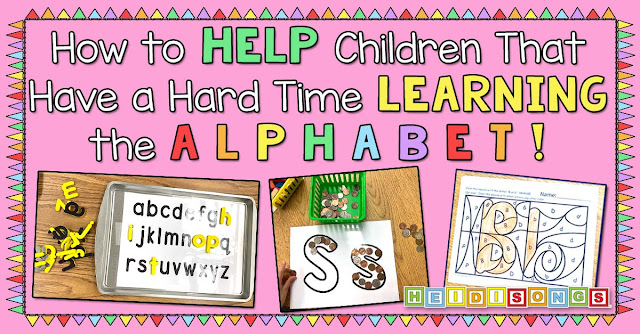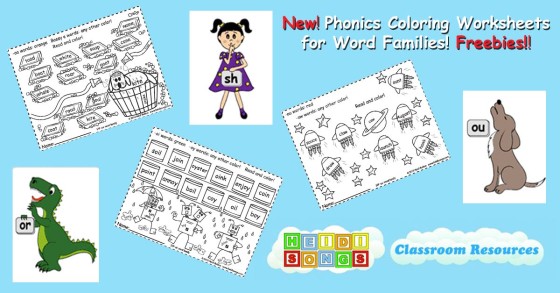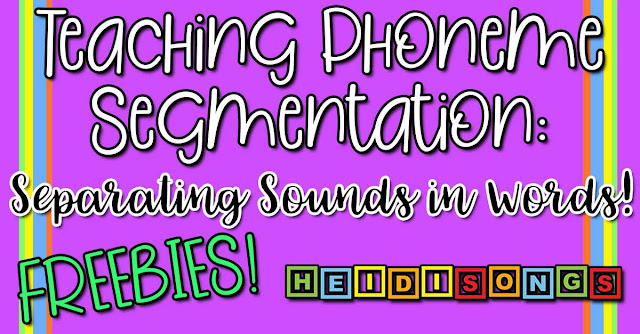Teaching Kindergarten: What's Working? Week #6
Welcome to week 6! I hope everyone is having a great year so far. Here is what's working for me on week #6.
1. Large Rhyming Words Practice Cards and Bingo Game
Producing rhyming words is always something that is not very much fun to practice, but it is something that just has to be done! Since I teach at a Title One school, many of the children come from homes where there are few books to read or literacy activities going on. So we have to fill in the gaps as best we can. One thing that is helping me this year is a new set of rhyming words practice cards and a matching bingo game that I made over the summer.
This is how it works: You take the large cards and put them into a gallon size zip lock bag. Then take a dark piece of 12 x 18” construction paper and fold it in half, and then insert it into the bag so that it is covering up the pictures of the rhyming words. The cards are printed with one picture above the other, so if you pull the paper up halfway, the children will just see the top picture. So when you pull it up, then you ask the children, “What rhymes with ____?” (say the name of the picture you are showing in the blank, of course!) I always do this part of the activity whole group. The children usually call out lots of different answers. I always tell them that there are many correct answers, but though only one of them is printed on the card. Then I pull up the card and they all shout out the picture on it. So we do this activity several times a week.
Then, in small groups, we play the matching rhyming bingo game. I use those same large practice cards as the calling cards, pulling each one only halfway up, and ask the children in the group to tell me as many rhyming words as they can think of as the word on the card. I praise all of the correct answers, and explain why if an answer may be wrong. Then I show the answer on the card, and the children cover up that picture on the bingo card. The first person to cover all six of the pictures on the card gets a bingo and he or she gets a couple of pieces of cereal. Then we keep playing until my cards are all gone and everyone has won! The children love this game, and it is much more fun than just randomly asking them to tell me words that rhyme with another. The artwork on this game was far too much work, so I cannot give this one away free - sorry! So we have posted it on my website as a download for sale.
2. Making Sight Words With Alphabet Pattern Blocks
Last week we made the word “the” with our Alphabet Pattern Blocks by using the black and white masters and having my parent volunteers trim the letters close and glue them down to form the word. I have also just posted some Pattern Block paper masters to copy on colored paper here. The children just had to glue down the paper pattern blocks to form the word “the.” I told my parent volunteer running the center to continually ask the children what word they were making, and how to spell it. I am hoping that the children will take their word home and hang it on the wall, and tell their parents what it says. We are ALMOST past the point where when I ask the children, “What word is this?” they stop either just giving me blank looks, or answering by just spelling the word, “T-H-E!” I’m sure it must be hard for those children who are still learning English, since the word “the” really doesn’t carry any meaning. It’s more of a language “placeholder.” But lots of them are now proudly answering, “The!” Hooray!
3. More, and Less, and Equal: Oh, My!
Comparing Sets is a hard concept, and I think that one of the hardest things about it is remembering the associated vocabulary. The children have to remember what the words “more,” “less,” and “equal” each mean individually. So several years ago I came up with a song for each of these words, and we sing them faithfully every year, and I think they really make a huge difference!
They are on the Musical Math CD and DVD. You do have to really explain and demonstrate with manipulatives the full meaning of these words, though, because the lyrics of the songs are meant to be a “hook” that helps the kids quickly remember if they are looking for the group with “a lot” or “a little” or “the same.” The real meaning of more, less, and equal, though, is much more complicated than this, so this cannot be the sum total of the lesson, that’s for sure!
Despite the success of the songs, the children still need to practice comparing sets, of course! So I came up with the More, Less, and Equal game a few years ago. All you need is a large die or a number spinner, some counters, and a more/less/equal spinner or die. Instead of a die, we use a large standing “Really Good Wheel” that I bought from reallygoodstuff.com for about thirty-five dollars. It looks and feels something like a roulette wheel, and the kids really love to play games with it!
This is how you play: In a small group, each child spins the wheel and takes the number of counters that came up on the wheel. After everyone in the group has had a chance to spin, then someone in the group rolls the more/less/equal die to see who is the winner of that round. If “more” comes up, then the person that has the most counters at the table is the winner of that round. If “less” comes up, then the person that has the least at the table is the winner of that round. If equal comes up, then if any two people have an equal number, then they are the winners of that round. If none of them have an equal number, then roll the die again until you have a clear winner. The winner of the round can get a piece of cereal, or an extra counter, or whatever you want! You can have the children all give back their counters and start again, or keep them all and add the next round’s counters to their existing number. It doesn’t really matter! The only thing that matters is that the children get some practice identifying numbers that are more, less, or equal to each other. I also sent a version of this game home for homework, complete with a number spinner and a more/less/equal spinner. I am including it in this blog as a free download, along with the parent directions! In addition, I am including the master for the more/less/equal die, so that you can make your own, if you want to do so. (After you print the spinner, of course, you’ll have to insert a paper fastener into the middle of it, and then put a paper clip around it. Loosen the paper fastener a bit so that it will spin.) We wrapped paper die around a foam die so that it would be sturdier than just a hollow paper cube die. It held up very nicely, and we were able to pass it along to another class to use the next day!
4. The “Secret Signal to Go to the Bathroom”
One thing that always drives me crazy is “potty wanna-bees!” That is, children that think they need to go to the bathroom just because they saw me give someone else permission to go. So many years ago, a very wonderful, experienced teacher taught me a trick: the “Secret Signal to Go to the Bathroom.” This little classroom procedure has been a life saver for me every single year! This is what it is: I teach the children that if they have to go to the bathroom, they should put one finger up in the air quietly. That way I will know that they are not waiting to answer a question or make a comment, but need to go to the bathroom. If I nod at him or her, that means that it is okay to go. (By the way, I have one student this year who keeps raising his middle finger when he needs to go, but I keep telling myself that this couldn’t possibly mean anything!) The great thing about using a secret signal is that most of the time, few or no children realize that someone was just given permission to go to the bathroom because the whole thing happened silently. That means that the need to go to the restroom does not suddenly become contagious in the middle of a lesson! If someone raises their hand to ask to go to the bathroom, I ask them to use the secret signal in a minute or two, and I’ll let them go. I try never to allow the children to get away with not using the signal to get permission during a lesson, because then no one will use it, and then I’ll have lots and lots of “potty wanna-bees” interrupting every lesson every day.
No one may go to the bathroom without permission, and if someone is already there, then I will never give permission for another child to go at the same time unless it is an emergency. (I usually look for signs of true distress, such as “potty dancing, etc.”) I also tell the children that if it is really an emergency and they just can’t wait, they should not be afraid to just speak up and tell me that they really need to go in order to avoid an accident. Children rarely want to tell anyone they are going to have an accident unless it’s really true, so I don’t really have a problem with children fibbing about this just to get permission to go hang out in the bathroom for a bit. I tell the children that in order to go to the bathroom, it has to be your own idea; it can’t be someone else’s idea. If you only tell me that need to go when you see that someone else is going, this tells me that you probably don’t need to go right this minute because it wasn’t your idea, and you can probably wait a bit. The fingers that are raised consistently each time someone comes back from the bathroom belong of course to the ones that really need to go. I also tell parents about this policy at the beginning of the year, and ask them to let me know if their child has trouble “waiting.” That knowledge does also help!
Other secret signals that I have used include:
- two fingers up means that you need a tissue
- three fingers up means that you need to put away or get a sweater
- four fingers up means that you need a drink
The year that the children finally decided that we needed FOUR different fingers worth of signals, I was feeling kind of amused about the whole thing, since usually we get by very well with just one or two! So I added, “Alright! Then FIVE fingers up means that you want to tell us something that has ABSOLUTELY NOTHING TO DO WITH ANYTHING WE ARE TALKING ABOUT!” Then as I giggled beneath my breath at my own inside joke, one of my students raised his hand (with five fingers up) and announced, “I’m going to Disneyland tomorrow!” I’m still not sure if the child actually knew he was way off topic and did that on purpose, or if it was just one of those “random thoughts” that burst forth from the average kindergartner at any given moment- with five fingers up, four, three, two, or one!
-------------------------------------------------------------------------------------------------------
Looking for more classroom management ideas? Check out all my great classroom management posters, songs and resources!
----------------------------------
Follow me! Did you enjoy this post? Do me a favor and share it with your friends! And follow this blog by signing up for my email updates here, or follow on Bloglovin', or follow me on TPT! I'm also on Pinterest, Facebook, Twitter, Instagram, Google+ and YouTube, too! Don't forget to sign up for our email newsletter for special deals and promo codes that you won't find out about anywhere else.















